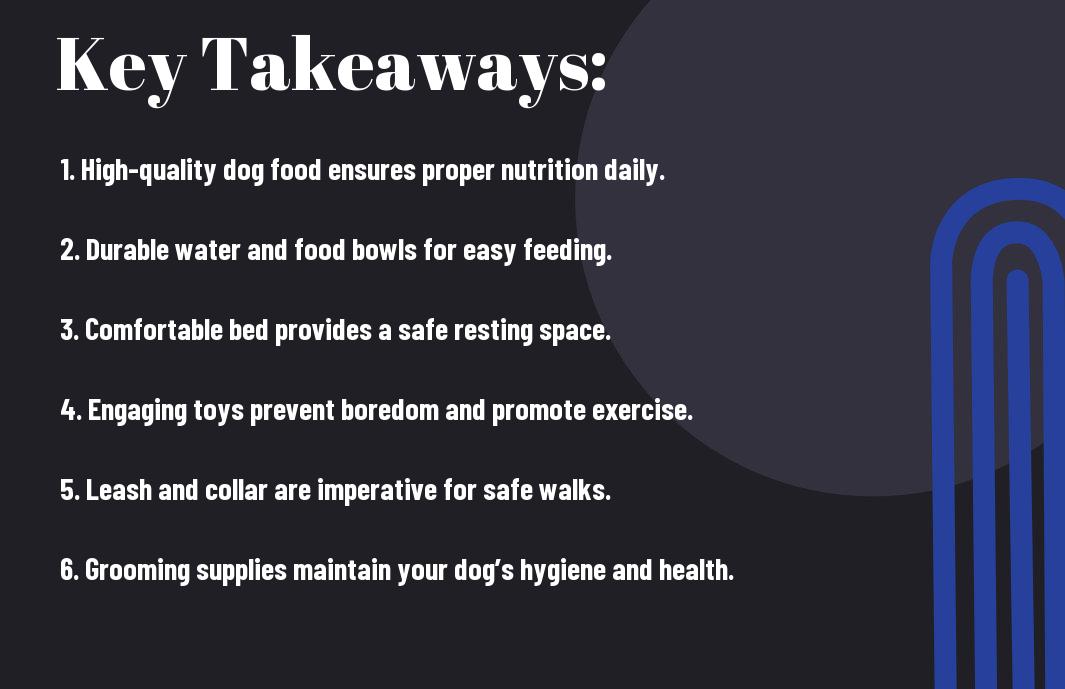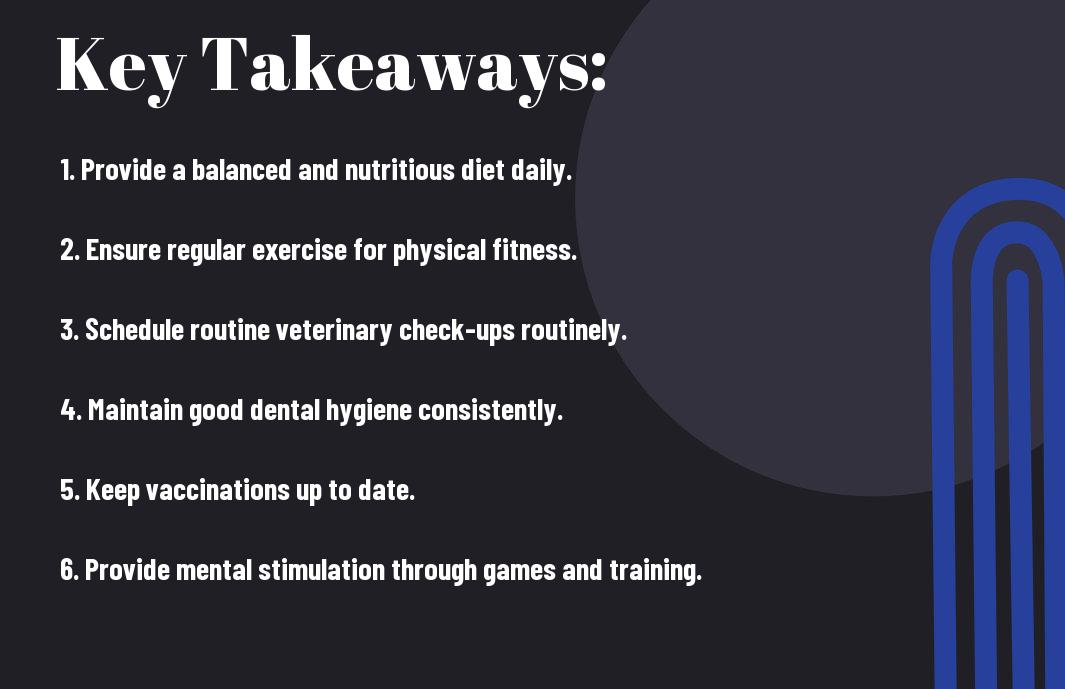Winter brings unique challenges for horse owners, making it important for you to focus on proper care. Extreme temperatures can lead to health issues in your horse, so it’s vital to ensure they stay warm and comfortable. This guide provides you with seven important tips to help you maintain your horse’s well-being throughout the cold months, ensuring they remain healthy and thriving.
Battling the Elements: Importance of Shelter and Windbreaks
Providing adequate shelter and windbreaks is necessary for protecting your horse from harsh winter conditions. Exposure to cold winds, snow, and rain not only compromises their comfort but can also lead to health issues such as colds or hypothermia. Well-placed structures and natural barriers can create a safe haven, allowing your horse to conserve energy and maintain warmth during extreme weather. By integrating effective shelter and windbreak solutions, you’ll enhance your horse’s overall well-being in winter months.
Selecting the Right Shelter for Your Horse
Choosing the appropriate shelter involves considering factors like size, ventilation, and ease of access. The structure should be spacious enough for your horse to move around comfortably while providing adequate protection from the elements. Aim for a design that includes proper ventilation to prevent moisture buildup, which can lead to respiratory issues. Positioning the shelter in a well-drained area can also mitigate mud and flooding, ensuring your horse stays dry and healthy throughout the winter.
Creating Natural Windbreaks in Your Pasture
Natural windbreaks, such as tree lines or hedges, can significantly reduce wind exposure for your horse. These barriers create a more sheltered environment, allowing for better energy conservation during chilly weather. Planting native shrubs or trees around the perimeter of your pasture not only serves this purpose but also enhances biodiversity on your property.
Incorporate a variety of species to diversify your windbreaks, focusing on fast-growing varieties like ewes and willows, which provide shelter in a shorter timeframe. Ensure that these plants are strategically placed to block prevailing winds effectively. Ideally, a windbreak should be at least 30 feet wide and 8-12 feet tall to optimize protection. Establishing safe barriers not only provides your horse a more stable environment but also contributes positively to the ecosystem, creating habitats for wildlife.
Nutritional Fortification: A Winter Feeding Guide
Your horse’s diet should evolve as temperatures drop to meet its changing energy demands. Stock up on high-quality forage, as it serves as a foundation for winter nutrition. When the weather is cold, you may notice your horse needing extra calories to maintain body heat. Incorporating higher-fat feeds, such as oats or added oils, can effectively boost energy levels while helping to keep your horse warm.
Adjusting Diet for Increased Energy Needs
The Role of Supplements and Minerals
Equine Attire: Choosing the Best Blankets and Gear
Selecting the right blankets and gear for your horse is crucial to ensure their warmth and comfort during winter. Consider your horse’s specific needs, including their coat thickness, age, and activity level. A variety of options are available, from lightweight sheets to heavy-duty blankets, catering to different climates and conditions. Look for features such as waterproofing and proper ventilation to maintain your horse’s health.
Types of Blankets and Their Benefits
Different types of blankets serve various purposes for your horse’s comfort and protection.
| Type | Benefit |
| Turnout Blanket | Designed for outdoor use, durable, and waterproof. |
| Stable Blanket | Provides warmth indoors, usually heavier and insulated. |
| Sheet | Lightweight and breathable, ideal for mild weather. |
| Neck Cover | Adds extra warmth, can be attached to blankets. |
| Fly Sheet | Protects from flies, useful in warmer months. |
Knowing the right type of blanket can significantly improve your horse’s comfort and well-being during the harsh winter months.
How to Properly Fit and Maintain Winter Gear
Ensuring your horse’s gear fits correctly is vital for their safety and comfort. A well-fitted blanket should cover from the withers to the tail, with enough room around the neck and legs for free movement. You should regularly check for signs of wear and tear, cleaning each item according to manufacturer guidelines. Proper maintenance can extend the life of your gear and prevent discomfort.
To achieve the perfect fit, measure your horse’s height (from the ground to the withers) and weight. A blanket that is too loose can slip or bunch up, while one that is too tight may cause chafing or restrict movement. Regularly inspect your gear for damaged buckles or tears, and wash them to remove dirt and sweat buildup, as this can lead to skin irritation. Maintaining well-fitted and hygienic gear greatly enhances your horse’s experience during winter.

Health Check: Monitoring Your Horse’s Condition in Winter
Maintaining your horse’s health during winter requires vigilant monitoring. Daily checks help you assess forage intake, hydration, and overall condition. Pay attention to changes in appetite, weight, and body condition score (BCS). Signs of discomfort or illness can escalate quickly in cold weather, making it imperative to address any issues immediately. Being proactive ensures your horse stays warm, healthy, and ready for activity throughout the winter months.
Key Signs of Cold Stress to Watch For
Watch for shivering, changes in attitude, decreased appetite, and weight loss as key indicators of cold stress in your horse. Increased resting periods or a reluctance to move may also signal discomfort. Be aware of behavioral changes that could suggest your horse is struggling to maintain warmth. Early detection of these signs allows you to take immediate action to secure your horse’s well-being.
The Importance of Regular Veterinary Check-ups
Regular veterinary check-ups during winter are vital for identifying underlying health issues that may be exacerbated by cold weather. These appointments allow for preventative care and help in early detection of illnesses or conditions related to seasonal stressors, ensuring your horse remains in optimal health. Your veterinarian can provide tailored advice on nutrition adjustments and seasonal care strategies, keeping your horse fit and thriving.
Veterinary evaluations should encompass not only physical examinations but also vaccinations, dental checks, and parasite control. Blood work may be necessary to gauge overall health and identify deficiencies that can impair your horse’s resilience to cold. Frequent consultations allow your veterinarian to adapt care as weather conditions change, ensuring your horse’s needs are met effectively throughout the winter. Prioritizing this ongoing relationship enhances your ability to maintain peak performance and well-being for your horse.
Safe Footing: Managing Hoof Care in Icy Conditions
Hazardous footing due to ice can lead to severe hoof-related injuries for your horse. Ensuring they are safe requires attentive hoof care practices adapted to icy conditions. Regular checks for ice accumulation in the hooves, especially in the frog area, will prevent discomfort. Use ice-clearing tools, maintain a clean environment, and consider safe footing options in paddocks to minimize risks.
Common Hoof Problems in Winter
During winter months, your horse is susceptible to frostbite, thrush, and other hoof-related issues due to the cold and wet conditions. Frostbite can damage sensitive tissues, while thrush thrives in moist environments like muddy paddocks. Watch for symptoms such as swelling, odor, or visible cracks, as these can lead to serious complications if untreated.
Tips for Winter Hoof Maintenance
Maintaining your horse’s hooves in winter involves frequent trimming and keeping them clean and dry. Ensure their shoes are fitted correctly to help prevent slips on icy surfaces. Applying hoof oil can protect against moisture and cold, while regular inspections will help catch potential problems early. This consistent approach will safeguard against winter-related hoof issues.
- Frequent trimming to avoid overgrowth
- Regularly check for ice and dirt buildup in hooves
- Apply hoof oil for protection
- Monitor for signs of thrush or other issues
Adapting to winter conditions is crucial for your horse’s hoof health. Improved care practices, like scheduled barn checks and ensuring proper nutrition, can enhance hoof resilience. Keeping them dry and inspecting for ice regularly aids in preventing serious hoof problems. Building a routine around hoof maintenance not only keeps your horse comfortable but also protects their long-term health.
- Ensure proper nutrition for hoof strength
- Use gravel paths to help wear down hooves naturally
- Consult equine professionals for specific care tips
- Educate yourself on common hoof issues during winter

Social and Mental Well-being: Keeping Horses Happy
Ensuring your horse’s social and mental well-being is just as vital as their physical comfort during winter. Horses are inherently social animals, and maintaining a connection with their herd or companions can significantly reduce stress and improve their overall mood. Offering opportunities for interaction, whether through turnout with friends or regular grooming sessions, helps cultivate a sense of security and belonging.
The Impact of Isolation on Equine Mental Health
Isolation can lead to increased anxiety and behavioral issues in horses. When separated from their herd, equines may experience depression-like symptoms, displaying signs such as excessive pacing, cribbing, or loss of appetite. Social animals thrive on interaction, and lacking companionship can hinder their emotional stability.
Activities and Enrichment to Engage Your Horse
Incorporating imaginative activities and enrichment options enhances your horse’s daily routine and satisfies their natural instincts. Engage them with puzzle feeders to stimulate their problem-solving skills, or set up an obstacle course to promote physical activity and curiosity. Regular training sessions not only strengthen your bond but also keep your horse mentally sharp.
You can also introduce varied experiences, such as trail rides in new environments or groundwork exercises, to prevent monotony. Evaluating your horse’s interests is key; some may thrive on object exploration, while others prefer social play with fellow horses. Regularly changing their environment, such as rearranging their paddock or introducing novel toys, enriches their surroundings and combats boredom. Keeping their minds active is necessary for their well-being, especially during the colder months. Tailoring these activities to your horse’s preferences will ensure they stay engaged and happy.
Conclusion
On the whole, effective winter horse care is vital to ensure that your horse remains warm and healthy throughout the cold months. By implementing these seven important tips—providing adequate shelter, maintaining a proper diet, ensuring hydration, using appropriate blankets, monitoring body condition, scheduling regular vet check-ups, and maintaining hoof care—you can help your horse thrive during winter. Prioritizing these practices will contribute to your horse’s overall well-being, allowing you to enjoy a strong bond and partnership through all seasons.
FAQ
Q: How can I ensure my horse stays warm during extreme cold weather?
A: Providing adequate shelter is necessary. Ensure your horse has access to a clean, dry barn or run-in shed. Additionally, using blankets designed for cold weather can help retain body heat.
Q: What is the best feeding strategy to keep my horse healthy in winter?
A: Increase hay intake, as it provides the necessary nutrients and helps keep your horse warm through digestion. Consider adding grains if your horse requires extra calories, but consult a veterinarian for personalized advice.
Q: How often should I exercise my horse in winter?
A: Aim for regular exercise, ideally 3 to 5 times a week, depending on your horse’s health and fitness level. Adjust the intensity to ensure safety on icy or snowy ground, and always warm up before more strenuous activity.











